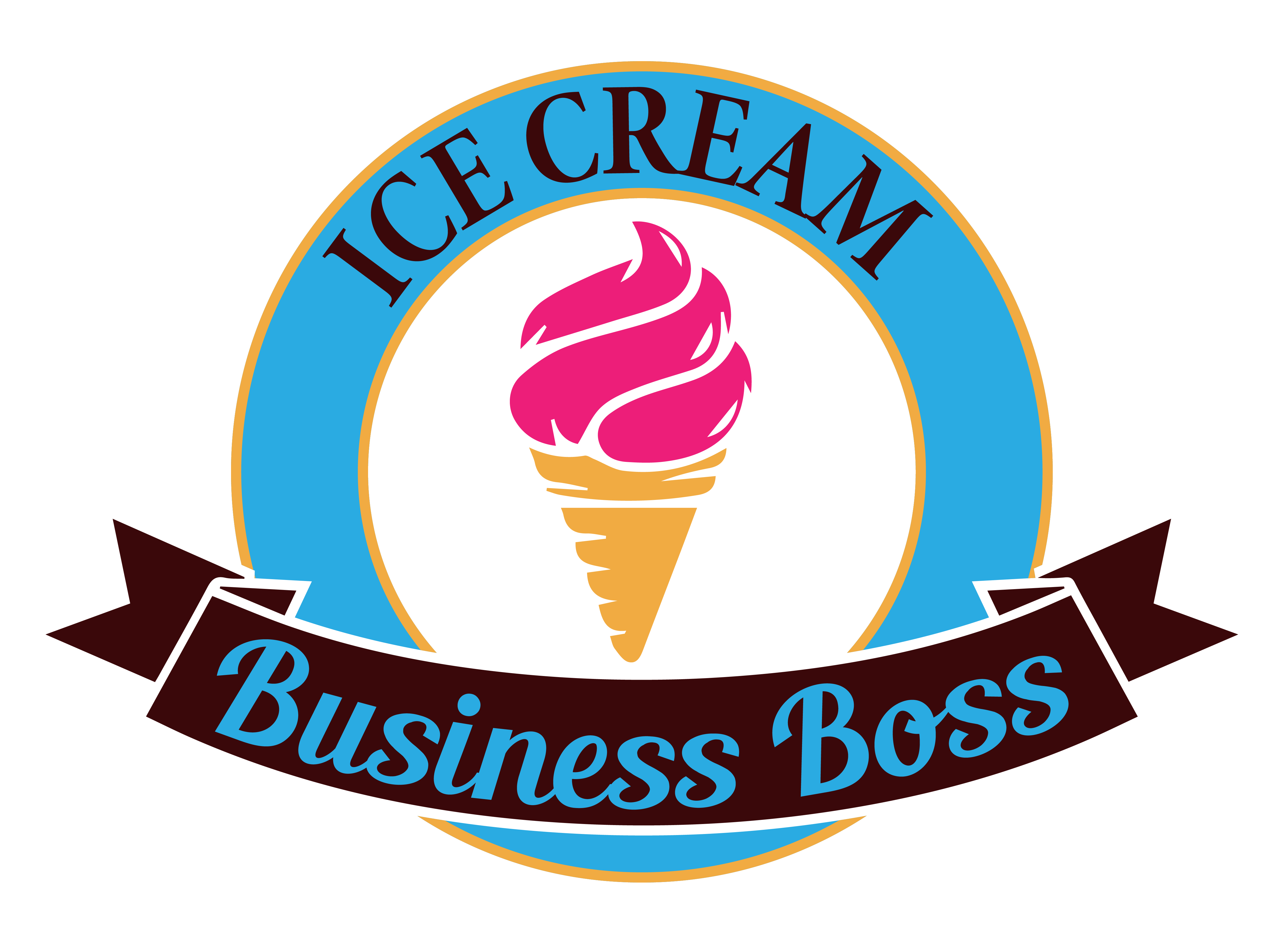The fascinating world of ice cream and yogurt production provides not just sweet delight but also extraordinary business potential. The market’s diversity creates a dynamic terrain for ambitious business entrepreneurs, ranging from traditional vanilla scoops to artisanal probiotic yogurts. Navigating this path, however, necessitates more than simply culinary prowess; it necessitates a well-structured business plan that serves as the cornerstone for sustainability.
To effectively embark on this journey, you should start by crafting a business plan that covers essential aspects such as market analysis, competitive strategies, production process outline, marketing approaches, and financial projections.
In this article, we will look at the essential components of an ice cream and yogurt-producing business plan. Whether you’re a dessert enthusiast dreaming of opening your parlor or a seasoned entrepreneur looking to expand, this article will walk you through the necessary procedures to make your creamy dreams a thriving reality.
Market Analysis: Understanding the Landscape
Every solid business plan starts with a market analysis because it gives a thorough understanding of the complex forces that define a certain industry. Exploring the market landscape is one of the core components of market analysis, and it is especially crucial for industries as competitive and dynamic as the ice cream and yogurt sectors. Such a thorough investigation is necessary for identifying gainful opportunities, gauging the size of the market, and understanding the competitive landscape.
A thorough examination of several factors is involved in a complex market analysis of the ice cream and yogurt business. Consumer preferences are one of the important things to take into account. To create items that appeal to consumers’ interests, it can be crucial to understand what flavors, textures, and surprises they prefer.
Keeping abreast of changing trends in this business is essential. These trends have the power to drastically alter the competitive environment, whether it be the surge in demand for healthier substitutes, the taste for artisanal craftsmanship, or the propensity toward exotic flavors.
Beyond tastes and trends, spotting possible market gaps is also important. Entrepreneurs can develop a niche for themselves by identifying areas where current offers are lacking. This can entail looking at elements that appeal to a discriminating customer base greatly, such as cost, accessibility, or even the use of products obtained sustainably and ethically.
The secret to customizing offerings in a way that fulfills their requests is gathering insights into the preferences of the target audience. Businesses that have a thorough understanding of what customers want can provide a variety of items that not only satisfy customers’ current needs but also pique their interest in brand-new experiences.
Offerings that are in line with client expectations increase the likelihood of achievement, whether it’s by providing dairy-free options for consumers who are lactose intolerant, capitalizing on the popularity of plant-based substitutes, or experimenting with creative flavor combinations.
Check out this article to learn more about the ice cream business plan.
Competitive Strategies: Setting Yourself Apart

It is important to recognize the importance of competitive differences in a market when there are many competing products. Your business plan serves as the guide for the strategies that will set your yogurt and ice cream items apart from those of your rivals. It is essential to include methods in this plan that highlight your uniqueness, help to establish your brand’s identity, and draw in discerning customers.
The need to emphasize your unique selling propositions (USPs) is crucial to this quest. These USPs serve as the pillars on which your products can establish a lasting presence in the market. The diligent sourcing of excellent components may be one of these USPs. The use of these premium ingredients not only improves the flavor and caliber of your products but also shows customers that your brand is committed to providing an enhanced experience, even in a market with standard options.
Another attractive USP is the innovation in flavor profiles. You can introduce flavors that grab the palate and arouse interest by straying from the norm. Innovative flavors can inspire clients to explore your offers outside of the ordinary, whether it is through the fusion of unexpected ingredients, the rebirth of nostalgic flavors, or the introduction of seasonal treats. This investigation has the potential to go beyond simple consumption and develop into a gastronomic excursion.
In the modern commercial environment, sustainability also functions as a strong USP. You can appeal to the expanding market of environmentally concerned consumers by integrating eco-friendly practices into your manufacturing processes, whether it be through responsible ingredient procurement, waste minimization, or the use of eco-friendly packaging. This resonance creates a bond that goes beyond the actual product and encourages brand loyalty based on shared values and a desire for a healthy planet.
Importantly, a competitive advantage works best when it appeals to your target market. As a result, your business plan needs to be created with a thorough understanding of the needs and preferences of your target market. Whether it’s eco-conscious consumers, taste-testers with intrepid palates, or health-conscious customers looking for guilt-free indulgence, tailoring your special offerings to meet their unique needs and aspirations can create an emotional bond that goes beyond the product to create a long-lasting brand relationship.
Production Process Outline: Ensuring Quality and Efficiency

Unambiguous and painstakingly designed manufacturing processes are the foundation of a thriving ice cream and yogurt-producing company. This method, which was carefully planned out and carried out, serves as the foundation upon which achievement is based. This procedural framework, which is envisioned in your business plan, encapsulates the journey from ingredient sourcing to quality control, capturing the essence of consistency that supports consumer loyalty.
The careful selection of ingredients is the initial step in this procedure. Your business plan must outline a thorough approach to locating the premium ingredients that serve as the basis for your mouthwatering creations. The focus on quality includes ethical considerations, sustainable sources, and potential allergens in addition to taste. You build authenticity and trust right away by making sure the ingredients align with the philosophy of your brand.
A precise description of each phase becomes essential as the process progresses. Each step requires accuracy, from blending and flavor infusion to pasteurization and homogenization. Clarifying this order in your business plan demonstrates your dedication to a methodical strategy that fosters product excellence. It conveys your commitment to upholding the consistency of flavor and texture, two aspects that have a big impact on client happiness.
It is impossible to overestimate the importance of consistency. Customers might become fans by maintaining consistency in flavor and texture. Your business plan should highlight how you intend to do this by putting strict quality control systems in place. These precautions include not just choosing top-notch components but also using standardized recipes, maintaining exact temperatures, and performing careful quality checks at each stage.
Integrating high standards and operational efficiency is crucial while designing the production process. The two facets work in harmony to guarantee that your products not only satisfy excellence standards but also do it sustainably. A process that is efficient results in increased profitability and this is achieved through streamlining distribution networks, cutting waste, and optimizing production timeframes.
Learn the factors involved in a food truck ice cream business plan by visiting our article here.
Marketing Approaches: Reaching Your Audience

Effective marketing serves as the keystone in today’s corporate landscape, attracting customers and weaving a web of brand recognition at the same time. This importance is highlighted in your business plan, where a wide range of marketing techniques should be painstakingly outlined, including both the online environment and in-person interactions.
The vibrant internet environment offers a favorable environment for building a strong brand presence. Your business plan should emphasize a diverse strategy for online marketing, starting with the creation of a strong online identity on numerous social media channels. These platforms offer a versatile canvas on which to display your ice cream and yogurt products, engage with customers, and spark discussions that are relevant to the tastes and aspirations of your target market.
Another crucial component is the creation of a user-friendly and aesthetically pleasing website. Customers may browse your items, comprehend your brand idea, and easily make purchases using this online storefront. The website should not only have a nice look but also be easy to use, resulting in a positive user experience and increased consumer loyalty.
Engaging content deserves special consideration in your company plan since it acts as the link between your brand and its audience. The narrative of your items can be revealed in regular blog posts, eye-catching photos, and educational films, creating an immersive experience that goes beyond transactional transactions. This content helps you engage with potential customers on a deeper level by highlighting your unique selling qualities, whether they be premium ingredients, creative flavors, or sustainable practices.
Although there are many chances in the digital world, in-person interactions still have a significant impact. You may reach a wider audience by collaborating with local cafes, hosting events in the neighborhood, and participating in food festivals.
These relationships, which are outlined in your company plan, can work as a springboard to pique clients’ interest and establish concrete touchpoints for them to engage with and appreciate your goods.
Customized marketing campaigns can permanently imprint your brand in the minds of customers by being customized to resonate with your target market. These ads demonstrate a deep awareness of your audience’s needs thanks to insights from your business plan that allow you to speak in a way that resonates with them.
Personalized campaigns may create a lasting impression by building a sense of connection that extends beyond merely purchasing a product, whether it be through health-conscious messaging, experimental flavor excursions, or a dedication to sustainable practices.
Financial Projections: Mapping the Path to Profitability
Financial predictions emerge as the compass that directs your organization toward financial sustainability in the complex world of business planning. Your painstakingly written business plan’s section on financial forecasts acts as a strategic road map, showing how income, costs, and profits are expected to develop over the coming years. This vision highlights your skill at resource management in addition to reflecting your intelligence.
This projection’s base is a thorough breakdown of beginning expenses. The financial commitments necessary for your company’s buildings, furnishings, advertising campaigns, people, and other necessities should be detailed in your business plan. You show that you have a solid understanding of the financial obligations that the start-up of the business requires by outlining these initial costs.
Another crucial factor is operational costs. You need to include all of the ongoing expenses, such as those related to production, marketing, employee pay, rent, utilities, and more, in this area. Each expense should be precisely quantified to demonstrate your careful commitment to financial planning. This portrayal aims to demonstrate your attention to practical realities, not just your ability to crunch figures.
Pricing strategy is a crucial component of financial forecasting. You describe here how you expect to profitably position your yogurt and ice cream goods within the competitive market. The factors that influence pricing decisions must be explained in your company plan, whether they be premium components, product distinctiveness, or perceived worth. A thoughtful pricing plan demonstrates your assurance in your comprehension of market realities.
The foundation of this initiative is realistic estimates supported by thorough study and expertise of the industry. Your business plan should tell a story about how well you understand your sector, supported by assessments of competitors, current market trends, and consumer preferences. This realism demonstrates your capacity to not only predict potential financial outcomes but also to make wise choices in the face of swift market changes.
Your financial estimates must be accurate and coherent since you should be aware of the critical eyes of lenders and investors. These stakeholders, who have a vested interest in the growth of your company, will carefully review this section to determine whether your endeavor is well-positioned for accomplishment. Your estimates should have a compelling justification that combines thorough study, market knowledge, and careful financial management.
Frequently Asked Questions
What is the significance of market analysis in an ice cream and yogurt-producing business plan?
Market analysis is essential since it provides a complete picture of the industrial landscape. It assists you in identifying trends, assessing consumer preferences, and assessing the competitive climate. You may modify your products to fit market expectations, find growth possibilities, and make educated strategic decisions with a thorough market analysis.
How can I set my ice cream and yogurt apart from competitors?
Focus on your unique selling qualities to stand out. This could include employing premium products, introducing new flavors, encouraging eco-friendly methods, or catering to specific dietary needs. Branding and narrative that is effective can also build a strong emotional connection with your target audience, making your items memorable and distinct.
What should I include in my business plan’s financial projections?
Financial predictions should provide a realistic picture of the financial performance of your company. Include initial expenses, ongoing operational expenses, predicted income based on sales volume and pricing, and projected profitability. These estimates demonstrate your understanding of the business’s financial features and are necessary for recruiting investors and receiving investment.
The information provided by IceCreamBusinessBoss.com (“The Site”) is for general informational purposes only. All information on the Site is provided in good faith, however, we make no representation or warranty of any kind, express or implied, regarding the accuracy, adequacy, validity, reliability, availability, or completeness of any information on the Site. Under no circumstance shall we have any liability to you for any loss or damage of any kind incurred as a result of the use of the Site or Reliance on any information provided on the Site. Your use of the Site and your reliance on any information on the Site is solely at your own risk. This blog post is for educational purposes only and does not constitute legal advice. Please consult a legal expert to address your specific needs. Terms and Conditions.

Hi! I am Shawn and I am a happy individual who happens to be an entrepreneur. I have owned several types of businesses in my life from a coffee shop to an import and export business to an online review business plus a few more and now I create online ice cream/gelato business resources for those interested in starting new ventures. It’s demanding work but I love it. I do it for those passionate about their business and their goals. That’s why when I meet a ice cream/gelato business owner, I see myself. I know how hard the struggle is to retain clients, find good employees and keep the business growing all while trying to stay competitive.
That’s why I created Ice Cream Business Boss: I want to help ice cream and gelato business owners like you build a thriving business that brings you endless joy and supports your ideal lifestyle.

